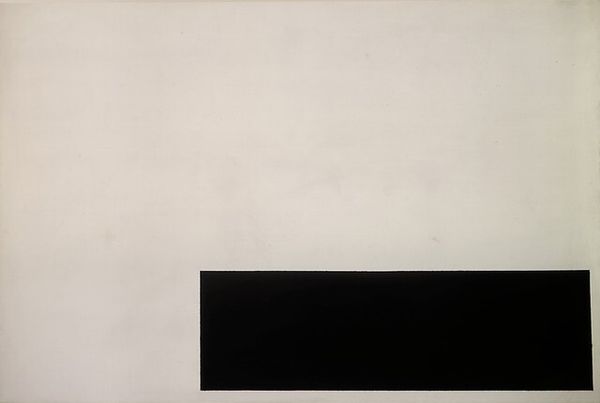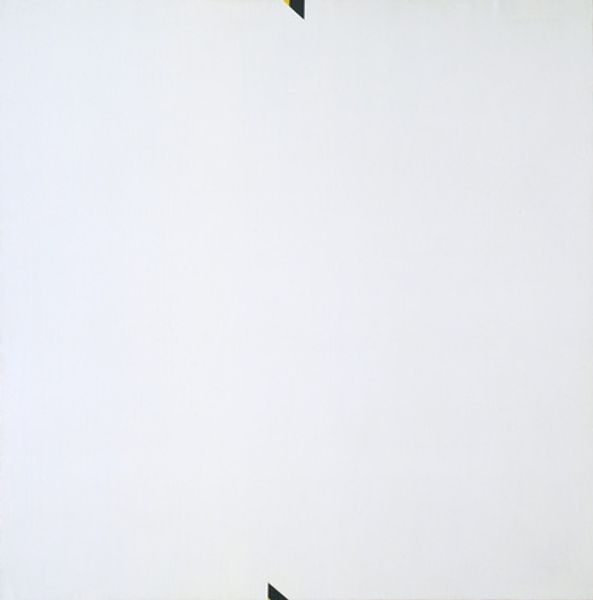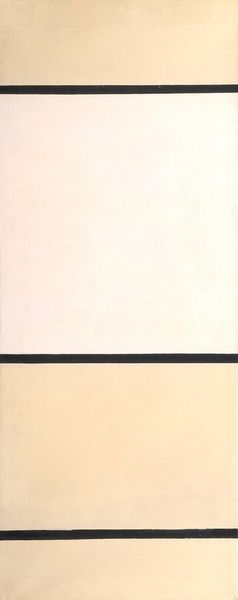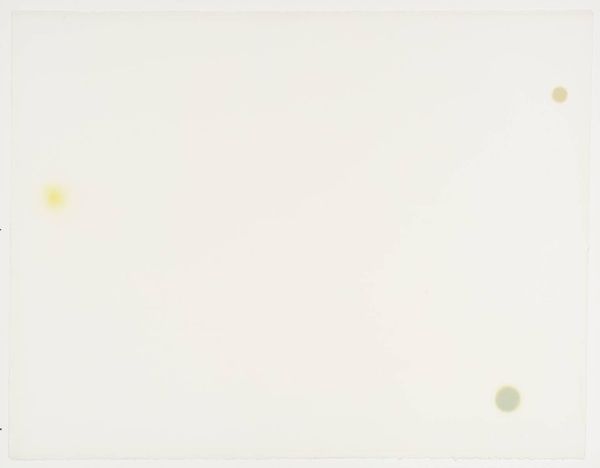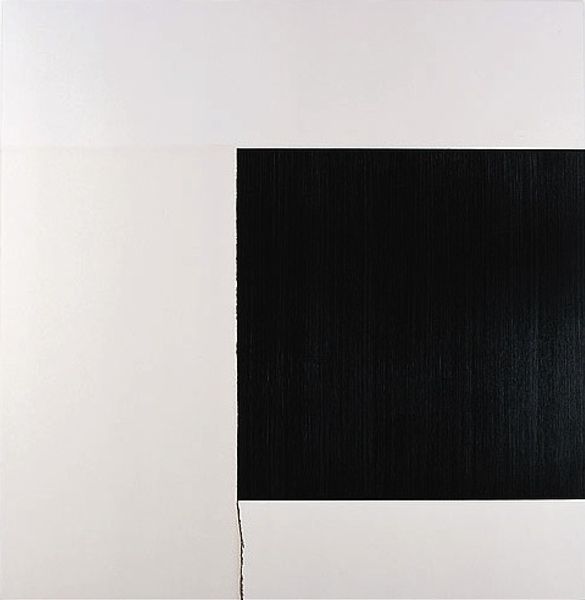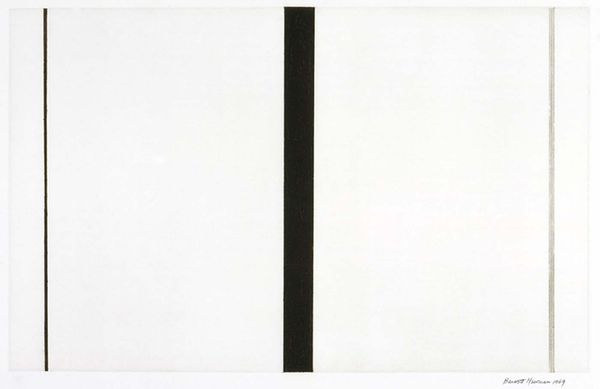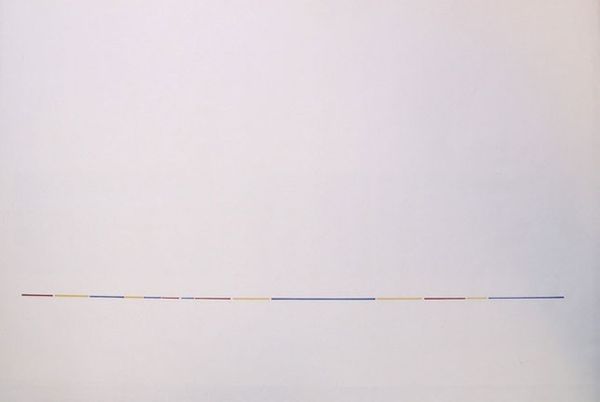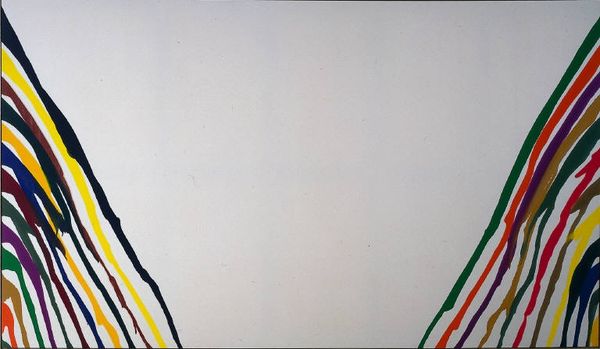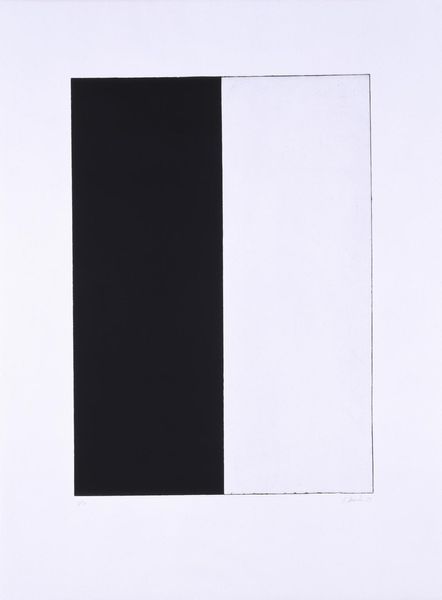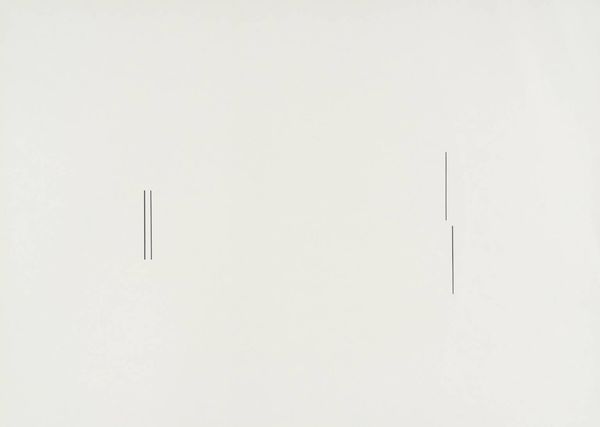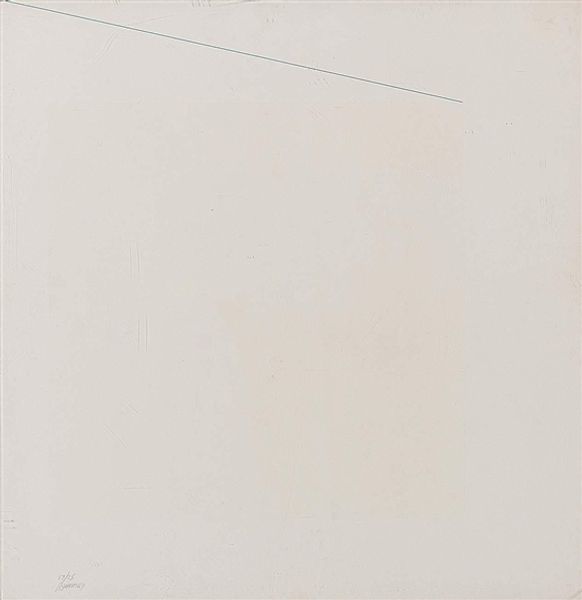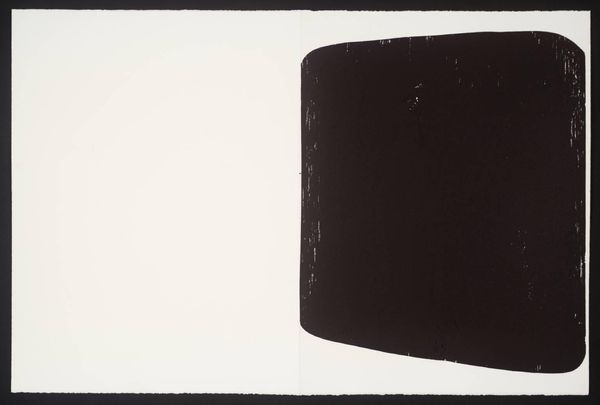
acrylic-paint
#
abstract expressionism
#
non-objective-art
#
minimalism
#
colour-field-painting
#
acrylic-paint
#
acrylic on canvas
#
geometric
#
abstraction
#
line
#
hard-edge-painting
Copyright: John McLaughlin,Fair Use
Editor: This is "Number 6," by John McLaughlin, seemingly acrylic on canvas, though I’m not certain of the date. It's striking in its starkness—a black rectangle anchored near the bottom of a white field. How would you approach understanding something so… reduced? Curator: From a materialist perspective, let's consider what isn’t there as much as what is. What kind of labour, or lack thereof, went into creating this image? We have, seemingly, the industrial perfection of the rectangle sharply juxtaposed against the irregularities of the hand-painted white. Do you see the variation in texture? Editor: I do, now that you point it out. The white isn't uniform. It’s not a machine-made surface. Curator: Exactly. That immediately challenges the presumed austerity of Minimalism. Where does the “hand” intervene? Is the labour visible or intentionally concealed? This tension reflects the postwar shift in artistic production, away from solely unique handmade objects toward explorations of mass production and standardized forms, yet retaining evidence of individual process. Editor: So, the labor of creating this stark composition, is partly the point? Even the canvas itself is a manufactured object – a support system created to display materials. Curator: Precisely! And, crucially, consider who had the means to engage in this kind of seemingly “simple” production. Who benefits from, and consumes this reduction? This forces us to analyze the social and economic structures that support such art making. Editor: I never thought about minimalism in terms of labour before. I’ve always focused on the aesthetics of it. Curator: The aesthetic is undeniably part of it. But consider what assumptions about work and value are built into that aesthetic appreciation. Editor: That's a helpful perspective shift. Thanks! Curator: My pleasure. Remember to look beyond the surface of "simplicity." There’s always a material history embedded in these pieces.
Comments
No comments
Be the first to comment and join the conversation on the ultimate creative platform.
